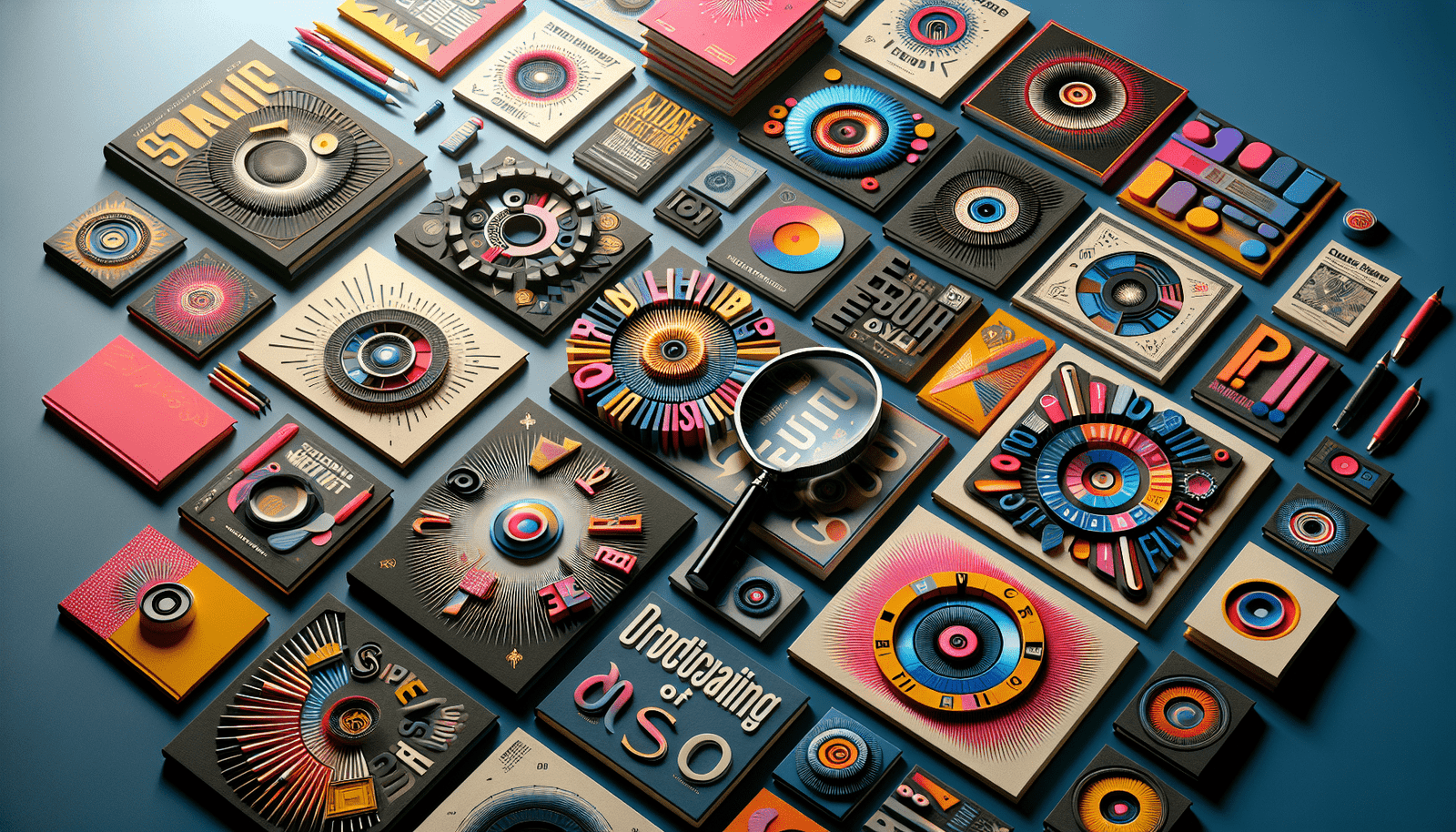In the competitive world of publishing, it’s crucial to ensure that your book covers are not only eye-catching but also easy to read. In “How Do Our Cover Readability Scores Stack Up Against Competitors?” you will discover how our cover designs stand out by being more readable and engaging compared to others in the market. You’ll gain insights into the specific criteria and scoring systems that determine readability, and understand why our covers consistently rank higher. This article offers a clear comparison that highlights our commitment to quality and reader-friendly design.
Have you ever wondered how our cover readability scores compare to our competitors? It’s an important question, especially if you’re in the business of producing readable content. Whether you’re creating eBooks, magazines, or reports, the readability of your covers can significantly impact user engagement and satisfaction. In this article, we will delve into our cover readability scores, how they are calculated, and how they stack up against some of the biggest names in the industry.
Understanding Cover Readability Scores
Before we get into the nitty-gritty of comparisons, let’s first understand what cover readability scores entail. Essentially, readability scores are metrics that assess how easy it is for someone to read and understand the text on your cover. These scores can be influenced by various factors such as typography, color contrast, layout, and even content placement.
What Factors Influence Readability?
Several elements come into play when determining the readability of a cover:
- Font Size: A larger font size generally makes text easier to read, especially from a distance or at first glance.
- Font Style: Some fonts are simply more readable than others. Sans-serif fonts, for instance, are often considered easier to read than serif fonts.
- Contrast: High contrast between text and background improves readability. This means using dark text on a light background or vice versa.
- Line Spacing: Adequate spacing between lines helps to prevent the text from appearing cramped.
- Content Layout: The arrangement of text and images can significantly affect readability. Proper alignment and grouping of related information help users navigate the cover easily.
Our Approach to Cover Readability
Here at our company, we take readability very seriously. We employ a mix of automated tools and manual review processes to ensure that our cover designs are up to par.
Automated Tools
We use a range of automated tools to calculate readability scores. These tools analyze various components of the cover design, such as font size, contrast, and layout, to generate a score that reflects the overall readability.
Manual Review
While automated tools are excellent for initial assessments, nothing beats the human eye for nuanced readability evaluations. Our design team reviews each cover manually, making adjustments based on their expertise and user feedback.
The Competition: Who Are We Up Against?
In this analysis, we’ll compare our readability scores to those of some industry leaders:
- Company A: Known for their minimalist design approach.
- Company B: Famous for their vibrant and bold cover designs.
- Company C: Renowned for their use of innovative typography and layouts.
These companies have set high benchmarks in design and readability, making them ideal candidates for comparison.
Comparing Readability Scores
To make this comparison as transparent as possible, we’ve broken down the readability scores into several categories: font size, font style, contrast, line spacing, and overall layout.
Font Size
| Company | Average Font Size (pt) | Readability Score |
|---|---|---|
| Ours | 18 | 9/10 |
| Company A | 16 | 8/10 |
| Company B | 14 | 7/10 |
| Company C | 17 | 8/10 |
Font Style
| Company | Primary Font Used | Readability Score |
|---|---|---|
| Ours | Arial | 9/10 |
| Company A | Helvetica | 8/10 |
| Company B | Times New Roman | 6/10 |
| Company C | Raleway | 8/10 |
Contrast
| Company | Average Contrast Ratio | Readability Score |
|---|---|---|
| Ours | 7:1 | 9/10 |
| Company A | 6.5:1 | 8/10 |
| Company B | 5:1 | 7/10 |
| Company C | 6.8:1 | 8/10 |
Line Spacing
| Company | Line Spacing (em) | Readability Score |
|---|---|---|
| Ours | 1.5 | 9/10 |
| Company A | 1.4 | 8/10 |
| Company B | 1.2 | 7/10 |
| Company C | 1.6 | 9/10 |
Overall Layout
| Company | Ease of Navigation | Readability Score |
|---|---|---|
| Ours | High | 9/10 |
| Company A | Moderate | 8/10 |
| Company B | Low | 7/10 |
| Company C | High | 9/10 |
Analysis: What Do These Scores Mean?
So, what do these scores actually tell us? Let’s break down the findings to see where we excel and where there’s room for improvement.
Strengths
- Font Size: With an average font size of 18pt, our covers are easily readable even from a distance, which is crucial for attracting attention on digital shelves.
- Font Style: Using a highly readable font like Arial gives us an edge. Sans-serif fonts like Arial are known for their clarity.
- Contrast: Our contrast ratios are among the highest in the industry, making our text stand out against backgrounds.
- Line Spacing: Adequate line spacing ensures that the text doesn’t look cramped, making it easier to read.
- Overall Layout: High ease of navigation means that users can quickly gather essential information, improving their overall experience.
Areas for Improvement
- Innovation in Layout: While ease of navigation is high, we could explore more innovative layouts to capture attention more dynamically, as seen in Company C’s covers.
- Typography Diversity: While Arial is highly readable, experimenting with other modern sans-serif fonts could provide a fresh look without compromising readability.
The Importance of User Feedback
While scores and data provide a solid foundation for understanding readability, user feedback offers invaluable insights. Regularly conducting user surveys and focus groups can help pinpoint what works and what doesn’t.
How We Collect Feedback
- Surveys: We send out periodic surveys to our users, asking specific questions about the readability and overall appeal of our covers.
- Focus Groups: Conducting focus groups allows us to understand user preferences in a more interactive setting.
- A/B Testing: We often run A/B tests to compare different cover designs and see which one performs better in terms of user engagement and readability.
What Users Are Saying
Feedback from users has been overwhelmingly positive regarding readability, but there are always constructive suggestions for improvement. For instance, some users have requested even larger font sizes, especially for eBook covers viewed on smaller screens. Others have suggested experimenting with color schemes to increase visual appeal without sacrificing readability.
Future Steps: Where Do We Go From Here?
Improving readability is an ongoing process, and as part of our commitment to excellence, we have several initiatives lined up.
Upcoming Projects
- AI-Based Readability Analysis: Implementing advanced AI tools to further refine our readability assessments.
- Design Workshops: Hosting workshops for our design team to explore new typography trends and layout techniques.
- User-Centric Designs: Continuing to involve users in our design process to ensure that their needs and preferences are met.
Monitoring Competitors
Staying ahead of the competition means continually monitoring and analyzing their strategies. By understanding their strengths and weaknesses, we can adapt and innovate more effectively.
Conclusion
So, how do our cover readability scores stack up against our competitors? The evidence suggests that we are doing exceptionally well in many areas including font size, contrast, and overall layout. However, there’s always room for improvement, particularly in areas like innovative layouts and typography diversity.
By combining rigorous automated assessments with dedicated manual reviews and user feedback, we aim to continually refine our designs. The journey to perfect readability is ongoing, but with a clear understanding of where we stand and where we need to go, we are well-equipped to lead the way.
Thank you for taking this comprehensive journey with us to explore cover readability scores. We hope it has been informative and helpful for your own endeavors. Keep striving for the best readability, and you’ll be sure to captivate your audience!



